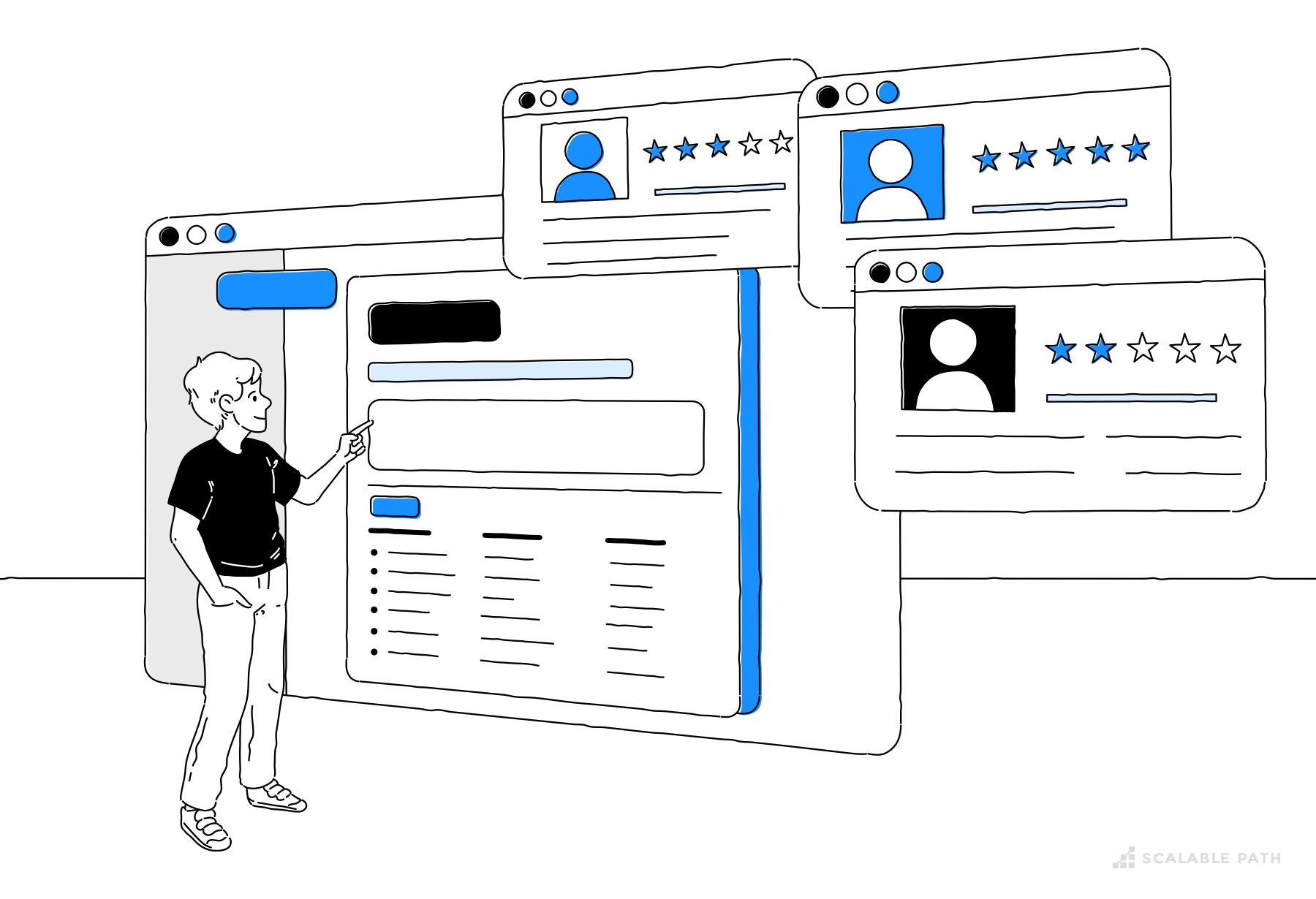Preparing your employees to do their best work and make the most of their time is always important. Yet while many companies take their employees through some form of onboarding, far fewer take the time to develop a comprehensive onboarding experience.
And now, given the increase in remote job opportunities, onboarding has become an even more unique challenge: how do you effectively onboard a remote workforce?
Companies like Zillow have already started figuring that out. With a vast majority of their employees currently working from home with plans to make 90% of roles remote-first as of 2021, Zillow needed to reevaluate their traditional process and convert it into a remote-friendly system. And if companies the size of Zillow can refigure their employee onboarding plan, it’s possible for your business, too.
What is onboarding?
Some people use "onboarding" interchangeably with "orientation" or "training," but they are technically three different activities.
Insperity, an HR solutions company, describes onboarding as, "a series of events (including orientation) that helps [employees] understand how to be successful in their day-to-day job and how their work contributes to overall business." Orientation is a part of the onboarding process, then, but does not cover the same depth of information or last as long as true onboarding.
Why is effective onboarding important?
We understand the importance of onboarding at its most basic level: new employees need to know what they’re doing at work. But the goal of good onboarding protocols goes much deeper.
Starting a new job can be overwhelming. An onboarding program designed with manageable tasks and clear instructions provides structure in what can be a chaotic time. This is particularly true if the job is newly remote or the employee is working in their first remote role.
Plus, the length of an average interview process in the United States is approximately 24 days. Depending on where you live in the country and what industry you’re in, it can be even longer than that. After investing so much time in finding the best candidate, why would anyone give up the opportunity to create a successful start for a new hire? (Especially when you consider that a good onboarding program can improve employee retention by over 80 percent!)
Onboarding helps a new employee feel connected to the company, which is even more crucial in a remote role. A study done by BambooHR found that with effective onboarding, 91 percent of employees felt connected to their company. Similarly, an effective onboarding program resulted in 89 percent feeling strongly integrated with their company culture. An onboarding program that includes online social opportunities and mentorship can go a long way in making remote employees feel like a part of the team.
 Programs to onboard remote workers are crucial to an organization’s success
Programs to onboard remote workers are crucial to an organization’s successHow to reimagine the onboarding experience
We’ll be honest: while creating a new remote onboarding program is absolutely worth the effort, designing one from scratch isn’t always easy. Luckily, you already have great resources available to help you.
Ask your more senior employees what they think is most important for new hires to know. This can be anything from the company’s values to the way you handle difficult clients to the best way to get in touch with IT. This helps you develop remote onboarding protocols while also letting you check in with longstanding employees to see what’s top of mind for them.
Now is also a good time to ask employees what worked well and what needs improvement from their own onboarding experience. Depending on the range of their tenures at the company, you could get a wide variety of insights. Look for trends among their answers and find ways to incorporate those changes in your new plan.
If you’ve already started adding more virtual components to your onboarding, ask your recent hires what they liked, what was easy to understand, and where they needed more assistance. The revision process will take some time, but it can evolve as your team finds new solutions.
Onboarding practices to get you started
Get new hires set with equipment
Consult with your IT department to create a general list of must-haves for remote employees. Then, ask other departments what tech they use most in their daily routines. Most roles will probably require a computer, mouse, and reliable Wi-Fi, but your design department might stress the need for a second monitor, and the sales team manager might need a digital whiteboard for presentations. Create equipment checklists for each department to take into account the small but important differences.
If you plan on shipping a work computer to your new employee, secure a tracking number so you can verify delivery. You could also make the items available for pickup from a central office, depending on your relative location. In either instance, the new employee should also receive clear instructions for getting everything up and running. Be sure to include information on how to set up a meeting with IT to review the basics and answer any questions.
This part doesn’t have to be all about work, though. Send a welcome kit with company swag, personal notes from their new team, or a gift card to a fun shop or restaurant. This kind of gesture offers a warm welcome, even if you’re not meeting in person.
Complete paperwork and access important documents
One of the biggest differences between traditional onboarding and a remote setup is the paperwork. In a typical office, one of the first things a new employee does is fill out a stack of forms for human resources. But if you’re not meeting in person, there are no paper documents. So you’ll need to make those forms available through a company intranet or employee portal. This collection should include (but isn’t necessarily limited to) the following:
-
official job offer and contract
-
payroll, tax, and legal forms
-
employee handbook
-
company mission statement
-
health insurance forms
-
retirement plan options
-
PTO and vacation time policies
-
company and department contact information
The documents should be securely stored as well as easy to access and download.
This portal would also be where employees could access the resources they need to continue their onboarding process. For example, Stephen Popp, senior director of sales at Epsilon, recently told Built In Chicago, "With new hire onboarding, we evolved our existing content to create a week of virtual sessions that explored our company history, products and solutions, global organization, teams and benefits. We explain how teams work together so new hires immediately understand their role in our company’s success."
 Onboarding new employees in a cohort
Onboarding new employees in a cohortCreate onboarding cohorts and make introductions
This will largely depend on the size of the company, but if possible, onboard new employees in cohorts. Starting at a new company can be a lot to process. To know you’re sharing the experience with other people can make it feel less overwhelming.
In addition to their cohort, introduce each new hire to their teams and mentors. These are the people they’ll work with every day and reach out to when they have questions, are looking for resources, or need to know how to set up a call with a client.
But be sure to keep the group size manageable when starting out. In an interview with Built In Chicago, HomeAdvisor sales trainer Craig Burke said his team’s onboarding improved when, "We broke down our sales training classes into small groups, with one to two trainers responsible for each class. This helps provide more one-on-one interaction in regard to getting them set up and logged into our system and helps us address any issues with their equipment much faster."
Also, encourage your teams to get everything in writing. This can be easy in a remote setting where people are regularly communicating through email and online chats. This practice serves two important purposes. One, it gives the new hire a point of reference if they need a refresher on something they’ve already asked. Two, as these helpful tips add up, you can compile them into a department-specific thread or company-wide document for everyone’s reference.
Provide in-depth coverage of the company’s culture and values
Being in an office setting immerses new hires in a company’s culture from the moment they step in the door. While remote onboarding can’t offer quite the same experience, there are still ways to help your newest employees feel like they’re part of the team.
Your company can create online classes that outline your company’s history, mission, and plans for the future. You can also use video tutorials to demonstrate how to use the intranet or explain the common workflow for projects. If your company has recently implemented remote policies, pair new hires with a seasoned employee also taking the course.
Then, go beyond sharing the mission statement and turn to digital representations of what it means to work at this company. Share the company’s social media profiles so new employees can see the kind of content that gets created and shared. Send them posts from the company blog that really capture the voice of the brand and highlight what you believe in.
And because part of company culture is being part of the team, ask their cohorts, co-workers and mentors to share work they’re proud of and, if they’re comfortable with it, their social media profiles. Few things bring people together faster than sharing their favorite dog pics from Instagram.
Introduce programs and software they’ll need to establish their workflow
Ease new employees into their remote work setup by assigning small, manageable projects to familiarize them with standard procedures, preferred apps, and what future assignments will look like.
An easy way to begin this step is by turning normal onboarding tasks into projects that require using tools the new hire will use on a daily basis. This way, they’re simultaneously accomplishing goals and becoming comfortable with how projects are completed.
It’s also a good way for teams to begin working together and for mentors to provide feedback. Onboarding is essentially a long, structured learning process, so keeping up with the work and monitoring progress will be important for everyone involved.
Review expectations, set goals, and schedule regular check-ins
In a remote work setting, employees are accustomed to being mostly on their own to get work done. This is why it’s so important to provide structures they can rely on. Structure gives them the confidence needed to work independently without questioning their every move.
With this in mind, set and share agendas to keep 1:1 and team meetings on track and provide a point of reference for future meetings. This will be especially helpful when you’re reviewing a project’s progress or going over onboarding benchmarks. And be sure to offer recognition for completed tasks and jobs well done.
Vibe offers a collaborative solution combining an interactive digital whiteboard and innovative smart software. Increase engagement and efficiency at your brainstorming sessions, virtual training, and classroom sessions by integrating your favorite applications with video conferencing and an infinite, mess-free writing canvas. Collaborate today with Vibe.
Looking for the latest in interactive whiteboard technology? Check out Vibe today!







-1sbltxxq4FYxHrXrwJVLsCDNsXpqNa.webp)
-5Zp0pmSytvcuYDVs1LvuwplKuRneK0.webp)
